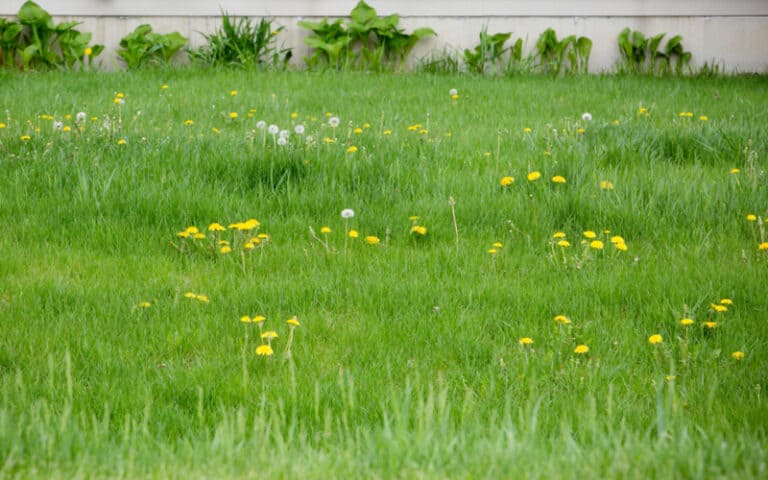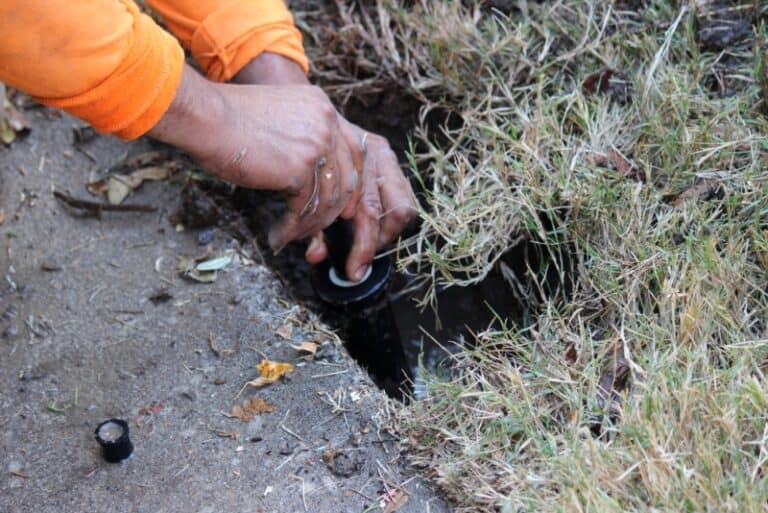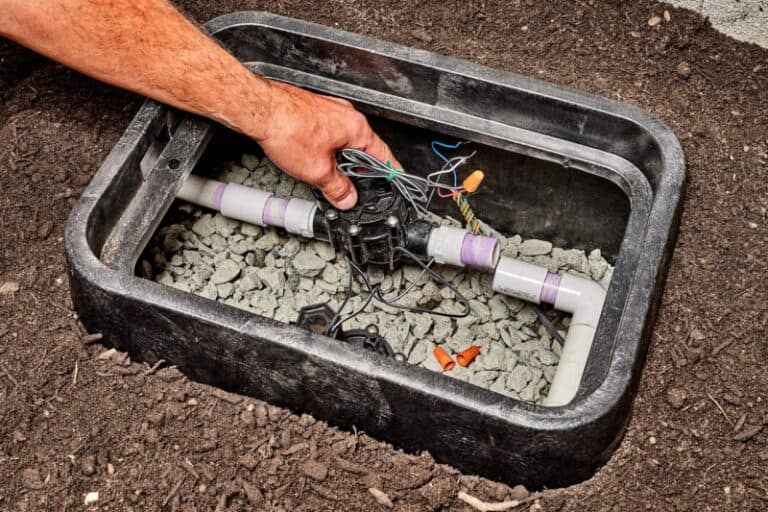A Complete Guide on How To Remove Plastic Landscape Edging

When it is time to give your lawn a facelift, one of the most important, yet tedious tasks is removing plastic landscape edging. While this edging is important to maintaining clean lines and maintaining a good environment for plants, it has to be removed properly or it can cause chaos in the future. Below is the best way to remove plastic landscape edging and make sure that you keep your landscaping looking appropriate.
1. All Bricks, Weed Mats, and Border Shrubs Need To Be Moved
Before you can move forward with removing the landscape edging, everything that is bordering it must be removed first. Start with any bricks, rocks, or planters you have along the edge so that you can get to the shrubs. They will need to go next and can be moved gently and placed to the side.
Make sure you dig out the roots entirely when you remove the shrub in case you plan to put it back in that same area or somewhere else on your lawn. Any other flowers, solar lights, and ornamental decorations you can remove should be taken up, as well. The weed mat will be the last part you pull up so you can expose all of the landscape edging. Having all of these materials and plants cleared out of your way will make the rest of the process move smoother.
2. Crease a Border In The Ground
Before you start pulling up the landscape edging, make sure you cut a crease in the ground around the edge of the border. While this may not seem relevant, once you pick up the edging, any small rocks, weeds, and roots that are no longer attached to the plant will begin spilling over into the ground. You want to keep all of this out of your manicured lawn and reduce the amount of work later. The crease gives it a place to stop rolling so that you are not cleaning it up all over the place when you are done.
If you do not want to cut a border into the ground, you can use a rising crease instead that will give a wall to catch anything that is rolling and falling as the edging comes up from the ground. Make sure it is placed outside of the edging by about two or three inches and is tall enough to capture and hold. The wall on the crease itself should be around three or four inches tall, especially if you have medium-sized rocks or larger ones in your garden that will spill out.
3. Flatten Out the Edging So That It Can Be Removed
When it is time to pull out the edging, you need it flat so that it will come up easier. Grab a tool that has a long handle and start stretching the bedding out along the ground. You want to secure it under the sides so that the fan is out and starts to lift. If it isn’t all the way out of the ground, it will start to rip and cause unwanted damage to the area. You want it to come up in minimal pieces and with ease.
Once it is pulled off the ground, you want to keep it flat. You can use parts of your body, like a foot or hand, or carry along a couple of bricks to flatten and spread the edging. The edging will want to curl and needs something with significant weight behind it to keep it secure during the removal.
4. Go For The Stakes
As you flatten out your edging along the border, you need to remove the stakes that are in there, as well. Remember that long tool with a long handle? You need to place it beneath the stake so that you can get it up. Once it is just below the stake, make sure you start moving in a back-and-forth movement to break up the dirt around it. As the dirt loosens, so will the stake, making it much easier to lift out of the ground.
These stakes have tabs on them that will wear down and snap so that the stake can be removed. You need to perform that rocking motion consistently until that tab does snap or the stake decides to come up on its own. Some stakes may break depending on how long they have been in the ground. As you remove a stake, continue around the border, flattening the edging and pulling out the next stake. There are stakes posted throughout the edging and they all need to be removed before you can move forward with applying new landscaping.
5. Starting Your New Project
Once the stakes and the edging have been removed completely from your lawn, you can move forward with the new project. You do not want any lingering stakes in the ground, as they can cause holes and damage to any new border that you use in your lawn. Feel free to donate your edging to another if it is still in good condition or recycle it, since it is plastic.
Do You Need Safety Equipment?
While you may think plastic can’t be harmful, keep in mind that plastic edging is hard plastic and can leave behind sharp areas if it has been cut or damaged. In order to protect yourself, you need the following safety equipment:
- Safety eyewear
- Gloves
- Long pants
Safety Eyewear
Because loose pieces can pop and fly while you are doing this process, you need to ensure that your eyes are protected. You also never know when a stake has broken and decides to fly out of the ground when removing the plastic landscape edging. You want to avoid sharp and heavy objects from hitting your eyes. Your sunglasses also are not the best option, but hard glass goggles that can withstand the pressure applied on a heavy rock are appropriate.
Gloves
Making sure that your hands are protected while you are digging in the dirt and holding down the edging is essential to your overall safety. Gloves protect you from the sharp edges, broken stakes, and also any bites from insects that may be hiding on the edge. Because it is dark and tucked away, it makes a great environment for some of the most unfriendly creatures in the dirt.
Long Pants
Since you will have your body down low and close to the ground, it is important to stay protected by having your legs covered during this process. Those same flying objects could jump up and hit your legs. By wearing long pants, you can avoid the unwanted bruises and cuts that can come with this task.
How Long Should This Take?
While the plastic landscape edging on your property may not be very long, this task may be harder than it seems. Depending on how long the edging has lasted down in the ground, it may not be as easy to pull up or come apart as easily as some that are newer. Give yourself a morning or afternoon to tackle each area of your lawn that has plastic landscape edging. This is especially important if you are planning to apply the new border as soon as you remove the old edging.
If you have an entire lawn to replace with edging, you may want to cut out a weekend and
How Long Does Plastic Landscape Edging Last?
Plastic landscape edging has been around for many years and is used in thousands of lawns. One of the biggest attractions to plastic landscape edging is its durability and long lifespan. In most cases, it can last anywhere from 10 to 15 years, depending on the environment. If it stays in an area with moderate rainfall and temperatures, you can get the longest lifespan. Areas that are extremely dry and hot can cause them to break down faster. Even with the early breakdown, it is still a durable edge to use.
Is Plastic Landscaping Edging Still Popular?
Because of its durability, it is still a popular option for many homeowners and commercial landscapers to use in their projects. In today’s time, there are a lot more border options to choose from other than hard plastic, but it is still easy to move and flexible for designs. You can shape plastic landscape edging to match your preference, fit around shapes that are not the norm, and go for styles that straight-edge brick options cannot provide.
If you are considering going with plastic edging again, there are several options to choose from. You can choose from a variety of colors and different grades of plastic in the edging. Popular colors include green, black, brown, and aluminum to help the edging fade into the background. The cost of plastic edging compared to other border options still makes it one of the most affordable, which increases the demand for it.
What If You Want To Add New or More Plastic Landscape Edging To Your Garden?
If you want to replace the old edging with new edging, it is better to dig the trench and make the crease around your garden. This way, when you have fished out everything that fell during the removal, you have a place to install the new one and start fresh without any exposed lines in your lawn.
Since you are making this out a couple of inches beyond the current border, you may want to grab an extra roll to make sure you have enough to cover it. If this is a large space you are replacing, go ahead and get a good measure so you have enough edging to make the replacement.
Now That I’ve Removed The Old Edging, What Do I Do With It?
This is a great question and many go ahead and recycle these pieces. If you do not have a use for them, they can be recycled at your local recycling center. If you want to get crafty, you can reuse them around your home for different projects. They make great additions to your planters that need help with drainage. Cut it into pieces and add them to the bottom when you repot your plants.
If there is still some life left in the plastic edging you removed, you can use it to border sheds and patch holes in structures outside your home. Greenhouses benefit well from an extra border of plastic landscape edging because it holds in the heat and keeps everything else out. You can even cut it into small pieces and use them for decorations on the outside to give a rustic theme to your garden.
Do You Think You Know How to Remove Plastic Landscape Edging?
As mentioned before, it is not a hard process to remove the plastic landscape edging from your lawn and replace it. However, it is a tedious project and one that you need to set time aside for when you plan it. The time and the steady manual labor may make it the big project of the day, especially if you are doing a lawn overhaul with a new project. As long as you follow the steps above, however, you should have minimal issues with removing the plastic landscape edging and moving on to your replacement. After all, if you can keep it in a few long pieces after taking it up, you can reuse it if you choose.






